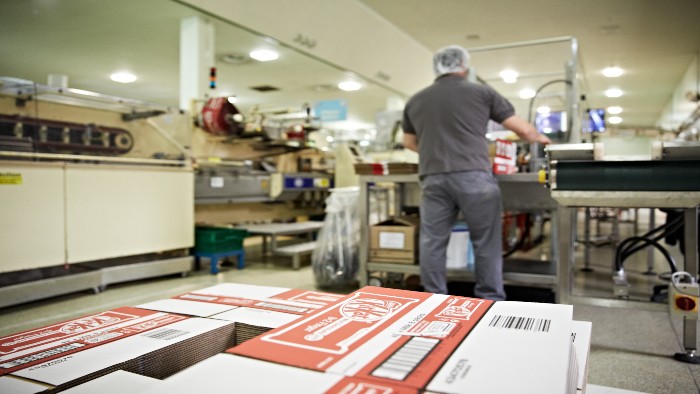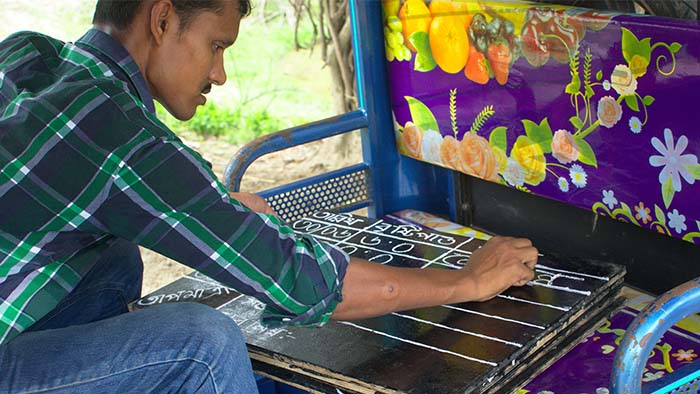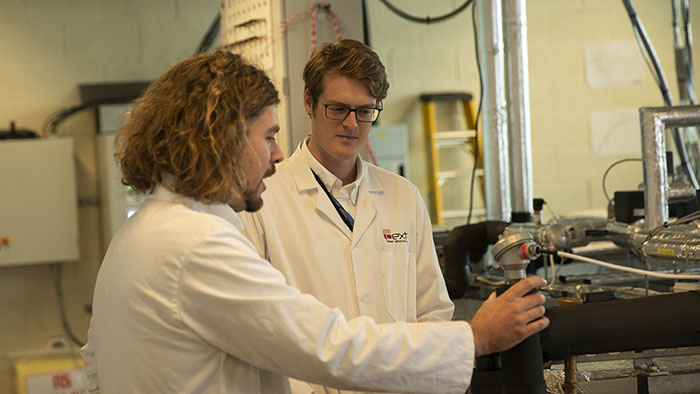Last time you were shopping for food in the supermarket, how much thought did you give to how the products you were taking off the shelves got there in the first place?
The chances are: not much, if any. And you wouldn’t be alone.
The food manufacturing industry is well hidden. Too few of us consider how the food we eat is produced.
In fact it’s a huge industry — with huge energy bills. Food needs to be heated and cooled in order to make it safe and prolong shelf life. This takes energy. In the UK the food and drink industry is responsible for 9.5 megatonnes of CO2 emissions every year.
Over the last few years, I’ve been working behind the scenes with food manufacturers, inventing ways to reduce the amount of energy needed to produce familiar household goods like KitKats and Aunt Bessie’s yorkshire puddings.
I launched the National Centre of Excellence for Food Engineering to encourage more engineers to work in the sector and to find solutions to the food industry’s challenges, including reducing waste energy.
After all, we all have to eat.
The origins of the centre
The idea started in 2012, when the Food and Drink Federation identified that a shortage of engineering resources was holding back food companies. The food sector employs more engineers than the aerospace and automotive sectors combined, but for people starting out, it’s not as well known as a career pathway for aspiring engineers.
We launched the National Centre of Excellence for Food Engineering in 2014 in order to address this gap in resources. We have added food engineering modules to many of our engineering courses in order to introduce our students to this career path.
We also train people already working in the sector through apprenticeships and Knowledge Transfer Partnerships, where we match engineers in the food industry with experts here at the university to work together to develop engineering solutions.
Then, in 2019 we opened our new £10m building, which features the professional-grade facilities we need to mimic a real food manufacturing environment. This has allowed us to work with major food companies to solve their engineering problems and help them become more efficient.
Helping KitKats save energy
One of these companies is Nestlé — the world's largest food and drink company. We worked with them to improve the efficiency of how they produce their iconic chocolate bar the KitKat.
It takes a lot of heat to make the KitKat we know and love. Before our project, 60% of the energy used to make KitKats was lost as hot air emissions. We wanted to find a way to reuse this energy as part of the process, and improve the overall energy efficiency of Nestlé’s wafer baking ovens by 15%.
It’s hard to reuse hot air in a baking process. The relatively low temperature of the air (150 °C) means the air stream moves slowly, making it harder to capture.
The other issue is hygiene. All food when cooked or baked gives off an oily residue due to the fats within the product. This gets in the waste air and can stick to the ovens and waste pipes when it cools down, creating mess and presenting a fire hazard.
We wanted to find a way to quickly change the waste exhaust gas into a usable source of heat elsewhere in the factory, before it had time to stick to anything.
We worked in Nestlé’s main research headquarters in York and had access to their enormous food processing factories, with ovens 50 metres long.
We developed a very efficient heat transfer system in the form of a pipe that transfers heat from the waste air from the biscuit baking to water. The resulting hot water was then used to melt the chocolate that covers the biscuits.
Our system was introduced across Nestlé’s confectionery process lines in five sites around the world, leading to energy cost savings of £246,000 a year, and far less wasted energy.
These energy savings will bring about considerable environmental and economic benefits for Nestlé and the wider sector. Adopting the system in Nestlé’s KitKat factory could save the company up to 50% of waste heat generated.
Rolling out the technology across the whole UK sector could save 43,000 million cubic metres of gas and reduce CO2 emissions by 3.7 million tonnes annually.







